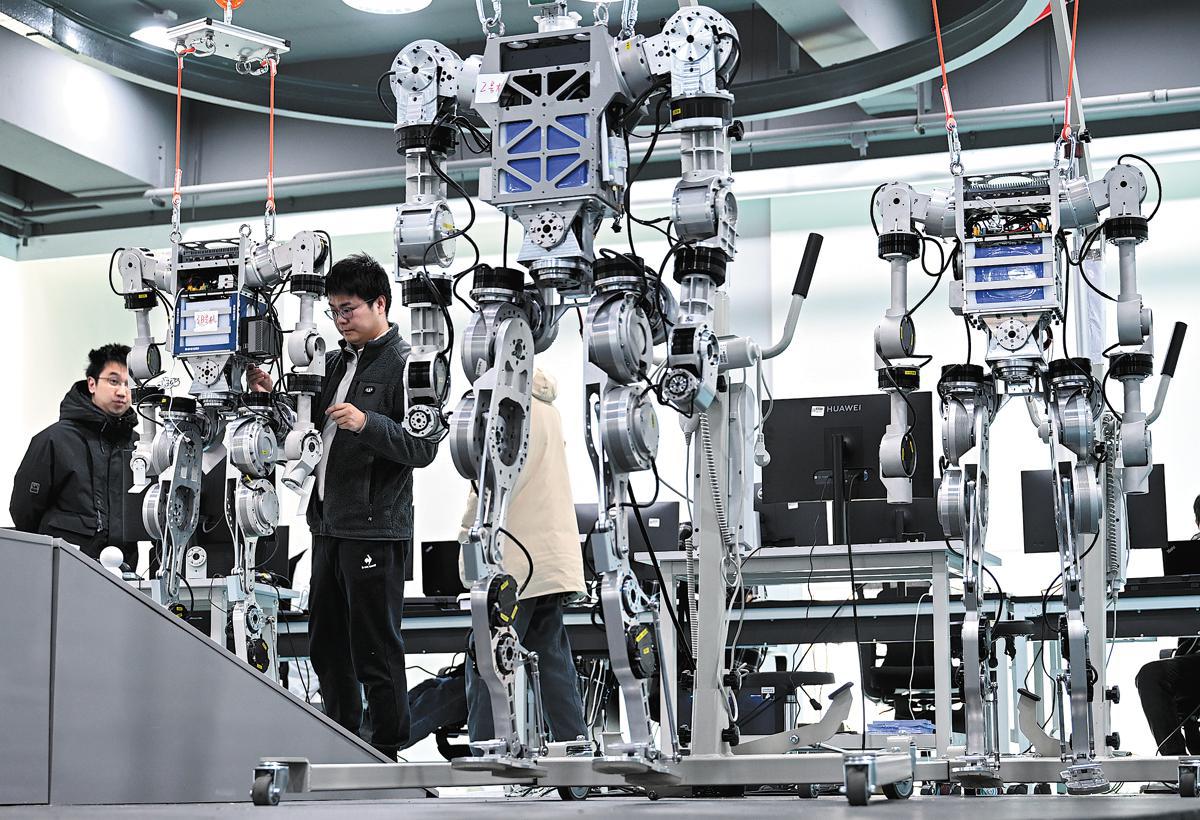Optimized, primed — next-Gen robots start rollout
AI-improved humanoids set for mass production, expanded roles in workforce


In a cutting-edge facility in Shanghai, engineers are precisely assembling humanoid robots, while rows of newly manufactured units stand ready for quality checks. In an adjacent testing zone, 100 humanoid robots are being trained to perform daily tasks — such as serving tea, folding laundry and setting tables — in simulated environments ranging from cafes to residential spaces.
The factory is in Lin-gang Special Area, Shanghai's first mass production hub for humanoid robots. Despite being operational for less than a year, it has already rolled out over 1,500 units, according to AgiBot, the artificial intelligence and robotics startup that runs the factory.
"We plan to open a second factory in Shanghai this year, and are aiming for an annual capacity of 10,000 units," said Peng Zhihui, co-founder of AgiBot.
In a market traditionally accustomed to United States names such as Boston Dynamics' Atlas robot, the global humanoid robotics industry is now being wowed by eye-catching innovations from Chinese companies.
This year is widely anticipated to mark the first mass production of humanoid robots, and Chinese heavyweights and startups are scrambling to exhibit their technological and manufacturing prowess.
On the list of 100 global humanoid robotics-related companies, which was recently released by United States investment bank Morgan Stanley, 37 are from China, including UBTech Robotics and BYD.
Humanoid robotics is a perfect example of "embodied AI", the integration of physical hardware and artificial intelligence, a phrase that was highlighted in the 2025 Government Work Report.
According to a Ministry of Industry and Information Technology guideline, China aims to build an innovation system for humanoid robots by 2025, with breakthroughs in key technologies to ensure the safe and effective supply of core components.
By 2027, China will see a secure and reliable industrial and supply chain system of humanoid robots, and related products will be deeply integrated into the real economy, the guideline added.
China has made rapid progress in robotics and artificial intelligence, said Qiao Hong, an academician at the Chinese Academy of Sciences and director of the State key laboratory of multimodal artificial intelligence systems.
"Over the past three years, China has accounted for more than half of the global installations of industrial robots, and its lunar exploration robots have successfully returned lunar soil samples," she said.
Qiao pointed to the development of humanoid robots as a particularly promising area, with China establishing a core foundation of technology for large-scale, cost-effective production of high-performance robotic systems.
China's humanoid robot market is expected to grow into a more than 100 billion yuan ($13.6 billion) market by 2030, up from 2.76 billion yuan in 2024, according to a report from the China Academy of Information and Communications Technology.
Goldman Sachs Research predicts the global humanoid robot market could hit $154 billion by 2035, with optimistic projections reaching $205 billion.























